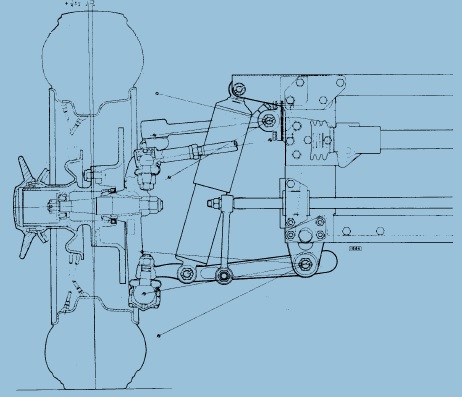I have been digging deep into vehicle dynamics in general and Roll centres in particular.
My OEM background has had me deliver various vehicle projects where Ive had a good overview but Im now digging in technically deeper. The aim is to learn mainly. If I can benefit the community by sharing what I have learned I'll be happy to do so. I'd be happy to hear from people here if this is too technical and needs to be watered down or vice versa. This forum is the sort of technical audience level I'm aiming for, I'll cover what my key take aways have been and then share the roll centres I have. The E type is a nice car to apply some of the calcs to because, it generally has a simpler set up than modern multi link suspension cars- so is easier to understand.
These are some of my take aways-
•The Steering axle benefits from low Roll Centre , long equivalent control arm lengths result in steering predictability due to minimal track change, minimal RC height change , minimal camber change etc
• High Roll Centre at the rear controls roll/yaw coupling and having a higher RC at the rear stabilizes the vehicles by causing yaw in the opposite direction to the direction of turn as the car rolls
• Total Lateral Load Transfer Distribution or 'TLLTD' at the front builds progressively with body roll. Higher rear RC means lots of nearly instantaneous geometric weight transfer from the rear end, causing transient overtsteer that compensates for other perceived sources of steering sluggishness (improves turn-in). When driving the E type- I find even at modest cornering speeds I can feel the steering load up nicely. When it was happening, I was thinking of the roll centre at the rear being higher than the front and transferring load progressively.
• Raising front roll centre improves on-centre steering feel-The E type for me seems to have a lot of 'feel' and feedback compared to my X308 XJR and even my E24 BMW M635CSi. The X308s front roll centre is under the ground at -50mm. My Porsche 993 Turbo has the best steering feel of all of my cars.
- A School of thought- as shared by Gordon Murray and practiced on the Maclaren F1- was to have the distance between the C of G and Rc the same front to rear, and keeping the Rcs both low.
By having Rcs higher rather than lower (or zero) a larger part of the TLLTD will be geometric . With lower Rcs more load will be transferred via the suspension system itself.With zero Rcs the load transfer will transfer immediately via the tyre contact patch while the rest of the Wt will pass through the springs and shocks. In addition zero Rc allows the lionshare of the vehicle dynamics tuning to be done by fine tuning the suspension. Im not sure how I feel about this one- I have no direct experience of a zero Rc (frt and rear) vehicle and suspension tuning it.
And finally
The E types roll centres seem rather high- 280 mm at the front and 146 mm at the rear. This seems weird to me-with high Roll Centres in general and the rear being lower than the front. I was corrected by a colleague in the industry, who had the E type front and rear roll centres measured- on a Kinematics And Compliance Rig. He got 60mm at the front and 150 mm at the rear. This makes more sense to me.
Ive never pushed my E type to the limit, I know it has close to equal weight distribution, and have never heard of evil handling characteristics. The steering is very 'talkative'.
I hope this post is of interest to people.
This shows a list comparison of the Jaguar E type and its roll centres compared to other modern contemporaries:











